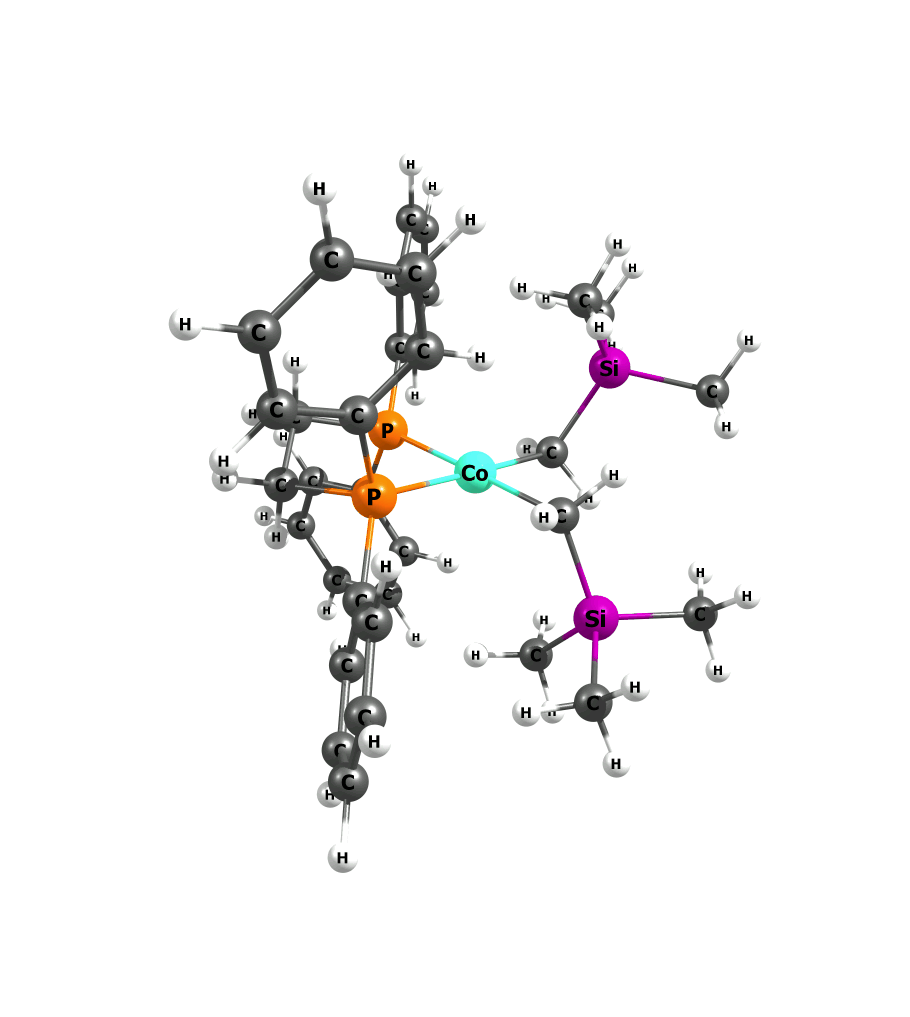Current Research Interests
Phosphorescent OLEDs
Organic light emitting diodes (OLEDs) are transition metal-based (TM) complexes that, when supplied with an electrical current, emit vivid colors via phosphorescence. OLEDs are currently the market leader in consumer display devices.
One remaining issue is the short lifetime of blue TM-based OLED emitters which is an industrial backbreaker. However, our study seeks to provide the OLED community with insight into possible failure pathways by modeling TM complexes that emit in the blue range.
First, we must be certain the method we use provides accurate results if we want to try and develop novel TM-based OLED emitters. Having already developed an extremely accurate method for Gaussian calculations, we now seek to employ a new program, ReSpect, to analyze color and radiative lifetime at the 2-component level. The focus of this work will be making systematic changes to the method (functional, basis set, etc.) to see how physical properties vary with different methods. This work is expected to set us up for the prediction of novel complexes that are expected to exhibit longer lifetimes and deep blue colors.
This project is in collaboration with Dr. Repisky (UiT) and Dr. Autschback (U. Buffalo).
Project members: Logan LaBarre, Tucker Provost, Agusta Kramer.


Cannabinoid Binding
The use of cannabinoids as anti-inflammatory drug and other potential biomedical applications will highly depend on knowing its mode of action, which is linked to how it binds to proteins. Our research project explores immune system related proteins and their interactions with THC and CBD through computational modeling within the DFT framework.
Different size models of cannabinoid-NLRP3 interactions and binding energies will be analyzed to determine the model that is both accurate and least costly (in terms of computational time). By understanding the key factors such as energy and geometry of binding to different regions of NLRP3, we will begin to understand the role cannabinoids play in mammalian cell inflammation.
This study is unique as only cannabinoid receptors have been studied in the literature to date.
Project members: Shaniel Fox, Clayton Robertson, Tucker Provost.



Education
Improving the retention of core concepts in early chemistry courses is an excellent way to ensure student success and retention in the department. Our group is exploring ways to think outside of the box to make the periodic table "memorable" in fun and imaginative ways.
There is a strong connection between entertainment and retaining knowledge. Just ask my 4-year old son why he knows the theme song to TMNT by heart, but can't remember what he at for lunch that day. One is simply more fun than the other. It therefore begs the question:
How do we make chemistry fun?
We are developing a system where we assign "characters" to elements in hopes of making element seem almost alive. Stories can be built from this concept if students need further help remembering. As an example, fluorine loves getting that one extra electron...fluorine is greedy! Meanwhile the characters in columns 1 and 2 are extremely giving. These character traits translate directly to electronegativity and well as electron affinity. By seeing the elements as a cast of characters, we hope to improve periodic trend retention in a simple yet fun way for student in high school and general chemistry.
Project members: Natalie Miner.



Catalysis
Employment of novel catalysts to reduce the energetic pathways for the synthesis of important chemicals can aid in reducing energy, cost, manpower, and time for reactions, allowing for faster time to market, cheaper alternatives, and more bio-friendly materials. This is the very heart of green chemistry as applied to industrial scale synthesis reactions. Understanding the electronic and steric effects of different catalyst designs will help determine the key roles ligands have in particular reactions and lead to more rational catalyst design.
Collaborations with local departmental and global researchers will focus on cutting edge reactions of industrial important compounds. These targets include material precursors and small molecules used in drug synthesis and delivery.
A current project is mechanistic pathway elucidation of a ruthenium catalyst that can selectively make 1,4-dienes from alkynes + alkenes in a solvent free reaction. This project is a collaboration with Concordia University (Canada).
In a similar light, conversion of carbon dioxide is an area of interest and extreme importance. Recent research in the literature has also focused on base metal complexes for a cheaper alternative for the transformation of CO2. Investigations in my group will continue along the pathway of conversion by base metal complexes and will also include materials like metal-organic frameworks (MOFs) and doped graphene for the uptake and conversion of CO2 to methanol.
Project members: Samantha Hart

